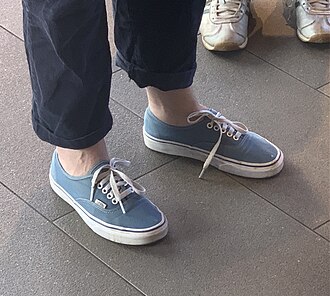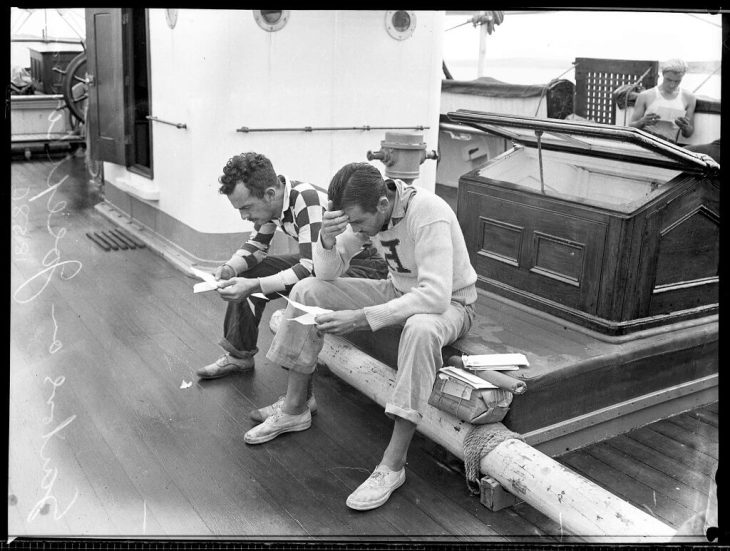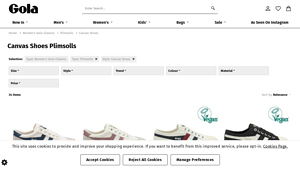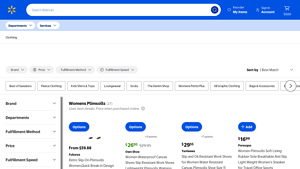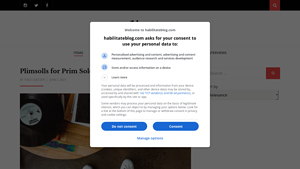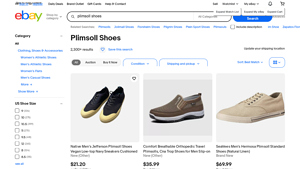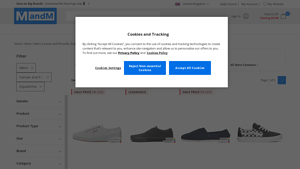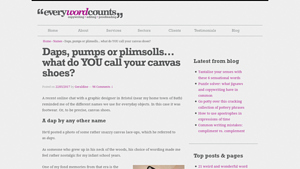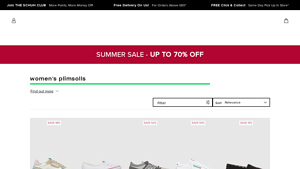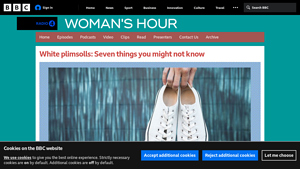Plimsoll Shoes Guide: Type,Cost,Material…
Introduction: Navigating the Global Market for plimsoll shoes
As international B2B buyers seek to source plimsoll shoes that blend comfort, style, and affordability, navigating the vast market landscape presents a significant challenge. With a diverse array of styles and materials available, from classic canvas to innovative vegan options, understanding the nuances of this footwear category is crucial for making informed purchasing decisions. This guide delves deep into the world of plimsoll shoes, covering essential aspects such as various types, their applications across different markets, and strategies for vetting reliable suppliers.
In an increasingly competitive environment, it is imperative for buyers from regions like Africa, South America, the Middle East, and Europe, including Brazil and Vietnam, to have access to comprehensive insights that empower their sourcing strategies. By addressing key considerations such as cost-effectiveness, quality assurance, and market trends, this guide aims to equip buyers with the knowledge necessary to optimize their procurement processes.
Whether you are looking to enhance your retail offerings or fulfill a specific customer demand, understanding the dynamics of the plimsoll shoe market will enable you to make strategic decisions that align with your business goals. With this guide in hand, you are poised to navigate the complexities of the global plimsoll shoe market confidently.
Understanding plimsoll shoes Types and Variations
| Type Name | Key Distinguishing Features | Primary B2B Applications | Brief Pros & Cons for Buyers |
|---|---|---|---|
| Classic Canvas Plimsolls | Lightweight canvas upper, rubber sole | Casual wear, schools, promotional events | Pros: Affordable, versatile; Cons: Limited durability for heavy use. |
| Vegan Plimsolls | Made from synthetic materials, eco-friendly options | Sustainable brands, eco-conscious markets | Pros: Appeals to eco-friendly consumers; Cons: May lack traditional aesthetics. |
| High-Top Plimsolls | Extended ankle coverage, lace-up design | Sports teams, casual wear, fashion retailers | Pros: Enhanced support; Cons: Can be less breathable than low-tops. |
| Children’s Plimsolls | Smaller sizes, vibrant colors, easy on/off designs | Schools, children’s sports, casual wear | Pros: Durable and comfortable; Cons: Limited styles compared to adult options. |
| Fashion Plimsolls | Trendy designs, varied materials, and colors | Retail, fashion boutiques, promotional events | Pros: Attractive to fashion-forward consumers; Cons: Higher price point. |
What Are the Characteristics of Classic Canvas Plimsolls?
Classic canvas plimsolls are characterized by their lightweight canvas uppers and rubber soles, making them a popular choice for casual wear. Their simplicity and comfort make them ideal for various applications, including schools and promotional events. When purchasing, B2B buyers should consider bulk order pricing, color options, and the potential for branding through custom logos. Despite their affordability, these shoes may not withstand heavy use over time, which is an important factor for businesses relying on durability.
How Do Vegan Plimsolls Stand Out in the Market?
Vegan plimsolls are made from synthetic materials, offering an eco-friendly alternative for consumers concerned about sustainability. These shoes are increasingly popular among brands that prioritize environmental responsibility. B2B buyers should assess the materials used, supplier certifications, and market demand for sustainable products when considering these options. While they cater to a growing niche, the aesthetic appeal might differ from traditional plimsolls, which could affect consumer choice.
Why Choose High-Top Plimsolls for Your Business Needs?
High-top plimsolls provide extended ankle coverage and a secure lace-up design, making them suitable for sports teams and casual fashion. They are particularly useful for brands targeting active consumers or those looking for additional support. Buyers should evaluate the fit, comfort level, and available colors when sourcing these products. While they offer better ankle support, high-tops may be less breathable than their low-top counterparts, which could impact wearability in warmer climates.
What Are the Benefits of Offering Children’s Plimsolls?
Children’s plimsolls come in vibrant colors and designs, tailored for comfort and ease of wear, making them ideal for schools and children’s sports. Their durable construction ensures they can withstand the wear and tear typical of active youngsters. B2B buyers should look for suppliers that offer a range of sizes and styles to meet diverse customer needs. However, the selection may be limited compared to adult options, which can restrict offerings in retail environments.
How Do Fashion Plimsolls Cater to Trend-Driven Consumers?
Fashion plimsolls feature trendy designs, varied materials, and colors that appeal to style-conscious consumers. They are often sought after by retail and fashion boutiques looking to attract a younger demographic. When purchasing, B2B buyers should consider seasonal trends, consumer preferences, and potential for collaboration with designers. While they can command a higher price point, the investment may yield higher margins if positioned correctly in the market.
Key Industrial Applications of plimsoll shoes
| Industry/Sector | Specific Application of plimsoll shoes | Value/Benefit for the Business | Key Sourcing Considerations for this Application |
|---|---|---|---|
| Education | School uniforms and physical education footwear | Promotes comfort and safety during physical activities | Bulk purchasing options, durability, and compliance with safety standards |
| Hospitality | Staff footwear for hotels and restaurants | Enhances staff comfort and presents a uniform appearance | Style variety, ease of cleaning, and slip-resistant features |
| Sports and Recreation | Training and casual wear for athletes | Provides lightweight, breathable options for training sessions | Material quality, availability of sizes, and performance features |
| Retail | Fashion footwear for casual wear | Appeals to fashion-conscious consumers, boosting sales | Trend alignment, diverse color options, and competitive pricing |
| Healthcare | Non-slip footwear for hospital staff | Ensures safety in high-traffic environments | Compliance with health regulations, comfort for long shifts, and easy maintenance |
How are Plimsoll Shoes Used in the Education Sector?
In educational institutions, plimsoll shoes are often part of the standard uniform, especially for physical education classes. Their lightweight and breathable design makes them ideal for active use, reducing the risk of injuries during sports. Buyers in this sector should consider bulk purchasing options to meet the needs of large student bodies, ensuring durability and compliance with safety standards for children’s footwear.
What Role Do Plimsoll Shoes Play in the Hospitality Industry?
In the hospitality sector, plimsoll shoes are favored for their comfort and aesthetic appeal. Staff members, including waitstaff and hotel personnel, benefit from wearing these shoes as they provide a professional appearance while ensuring comfort during long shifts. When sourcing plimsolls for this application, businesses should focus on slip-resistant features and ease of cleaning, as both are crucial in maintaining a safe and hygienic environment.
How are Plimsoll Shoes Beneficial in Sports and Recreation?
Athletes and recreational users often choose plimsoll shoes for training and casual activities due to their lightweight and breathable construction. These shoes are designed to provide flexibility and comfort, allowing for a full range of motion during workouts. Buyers should prioritize material quality and performance features, ensuring that the footwear can withstand rigorous use while catering to various sizes and styles.
Why are Plimsoll Shoes Important for Retail?
In the retail sector, plimsoll shoes are marketed as fashionable casual wear. Their versatility and comfort make them attractive to consumers looking for stylish yet practical footwear. Retailers should focus on aligning their offerings with current fashion trends, providing diverse color options, and maintaining competitive pricing to attract a broad customer base.
How Do Plimsoll Shoes Enhance Safety in Healthcare Settings?
In healthcare environments, plimsoll shoes serve as non-slip footwear for staff, reducing the risk of accidents in high-traffic areas. Their comfort is essential for professionals who spend long hours on their feet, making them a practical choice. Sourcing considerations for healthcare buyers should include compliance with health regulations, ensuring that shoes are easy to maintain and provide adequate support for prolonged wear.
3 Common User Pain Points for ‘plimsoll shoes’ & Their Solutions
Scenario 1: Sizing and Fit Issues with Plimsoll Shoes
The Problem: B2B buyers often struggle with the sizing and fit of plimsoll shoes, particularly when catering to diverse markets across different continents. Variations in sizing standards can lead to significant inventory issues, where the wrong sizes are ordered, leading to unsold stock and lost revenue. This is especially critical for buyers in regions like Africa and South America, where local sizing may not align with international brands. Ensuring that employees or customers receive the correct fit can be challenging when there is a lack of standardized sizing charts.
The Solution: To mitigate sizing issues, buyers should establish clear communication with suppliers regarding sizing standards. Request detailed sizing charts that are specific to each brand, and consider implementing a fit sample program. This allows buyers to order a selection of sizes to distribute within their markets for testing. Additionally, investing in a robust inventory management system that tracks customer returns due to sizing issues can provide insights into common discrepancies. This proactive approach not only enhances customer satisfaction but also reduces the risk of overstocking incorrect sizes.
Scenario 2: Quality Assurance and Durability Concerns
The Problem: Another significant pain point for B2B buyers is the inconsistency in quality and durability of plimsoll shoes. With varying manufacturing processes across different suppliers, some buyers find that the shoes do not withstand the rigors of daily use, especially in industrial or educational environments. This can lead to frequent replacements, increased costs, and dissatisfied end-users, which can tarnish the brand’s reputation.
The Solution: To address quality concerns, buyers should prioritize sourcing from reputable manufacturers with established quality control processes. Conducting factory audits and requesting samples before placing large orders can help ensure that the products meet durability standards. Additionally, establishing long-term relationships with manufacturers who can provide consistent quality and support can be beneficial. Implementing a warranty or return policy can also reassure buyers, as it allows them to return substandard products without incurring additional costs. Educating end-users on proper care and maintenance of plimsoll shoes can further extend their lifespan.
Scenario 3: Limited Customization Options for Branding
The Problem: B2B buyers often face challenges when it comes to customizing plimsoll shoes for branding purposes. Many suppliers offer limited options for colors, materials, and logos, which can hinder a company’s ability to create a unique brand identity. This is particularly important for businesses in competitive markets where differentiation is crucial for attracting and retaining customers.
The Solution: To overcome the limitations of customization, buyers should seek out suppliers that specialize in bespoke plimsoll shoes. Engage in discussions about potential design options and minimum order quantities for custom orders. Collaborating closely with suppliers during the design phase can lead to more tailored solutions that align with the buyer’s branding objectives. Utilizing digital design tools can also help visualize the final product before production begins. Furthermore, exploring partnerships with local artisans or manufacturers can provide unique customization options that resonate with regional markets, enhancing brand visibility and customer loyalty.
Strategic Material Selection Guide for plimsoll shoes
When selecting materials for plimsoll shoes, international B2B buyers must consider various factors that influence product performance, cost, and market suitability. Below, we analyze four common materials used in the manufacturing of plimsoll shoes, focusing on their properties, advantages, disadvantages, and implications for buyers in diverse regions such as Africa, South America, the Middle East, and Europe.
What Are the Key Properties of Canvas in Plimsoll Shoes?
Canvas is the most traditional material used in plimsoll shoes, known for its durability and breathability. Typically made from cotton or a cotton-polyester blend, canvas can withstand moderate wear and tear. It is generally rated for temperatures up to 60°C (140°F), making it suitable for warm climates. However, it lacks significant water resistance, which can be a drawback in humid or rainy environments.
Pros: Canvas is cost-effective, lightweight, and easy to dye, allowing for a wide range of colors and designs. It is also biodegradable, making it an attractive option for eco-conscious consumers.
Cons: While durable, canvas can wear out quickly under heavy use and may not provide adequate support for prolonged wear. Additionally, its limited water resistance can lead to discomfort in wet conditions.
Impact on Application: Buyers targeting markets with moderate climates may find canvas plimsolls appealing, but those in regions with heavy rainfall should consider alternative materials.
How Does Rubber Enhance the Performance of Plimsoll Shoes?
Rubber is commonly used for the soles of plimsoll shoes due to its excellent grip and flexibility. It can withstand a range of temperatures, typically from -20°C to 80°C (-4°F to 176°F), and offers good resistance to abrasion and wear.
Pros: Rubber soles provide superior traction, making them ideal for various surfaces. They are also waterproof, which enhances comfort in wet conditions.
Cons: The manufacturing process for rubber can be more complex and costly compared to canvas. Moreover, rubber can be heavier, which might not appeal to all consumers.
Impact on Application: Buyers in regions with diverse terrains, such as Brazil and Vietnam, will benefit from rubber soles due to their durability and grip. Compliance with international standards (like ASTM) is crucial to ensure quality and safety.
What Role Does Synthetic Leather Play in Plimsoll Shoe Design?
Synthetic leather, often made from polyurethane (PU) or polyvinyl chloride (PVC), is increasingly popular in plimsoll shoes. It mimics the appearance of genuine leather while providing enhanced durability and water resistance.
Pros: Synthetic leather is easier to clean and maintain than natural leather, making it suitable for everyday wear. It is also more affordable and available in various textures and colors.
Cons: While synthetic leather is durable, it may not breathe as well as canvas, leading to discomfort in hot climates. Additionally, its environmental impact is a consideration for eco-conscious buyers.
Impact on Application: This material is particularly appealing in markets where style and ease of maintenance are priorities, such as in urban areas of Europe and the Middle East. Buyers should ensure compliance with relevant standards for synthetic materials.
Why Is Hemp Gaining Popularity in Plimsoll Shoe Manufacturing?
Hemp is an eco-friendly alternative gaining traction in the footwear industry. It is known for its strength, durability, and natural resistance to mold and mildew.
Pros: Hemp is biodegradable and requires fewer pesticides and fertilizers to grow, making it an environmentally friendly choice. It is also breathable and offers good moisture-wicking properties.
Cons: Hemp can be more expensive than traditional materials like canvas, and its availability may vary by region. Additionally, the texture may not appeal to all consumers.
Impact on Application: Buyers focused on sustainability, particularly in Europe and North America, may find hemp plimsolls attractive. However, they should consider local market preferences and pricing strategies.
Summary Table of Material Selection for Plimsoll Shoes
| Material | Typical Use Case for plimsoll shoes | Key Advantage | Key Disadvantage/Limitation | Relative Cost (Low/Med/High) |
|---|---|---|---|---|
| Canvas | Casual wear, summer footwear | Lightweight and breathable | Limited water resistance | Low |
| Rubber | Sports and outdoor activities | Excellent grip and waterproof | Heavier and more complex to manufacture | Medium |
| Synthetic Leather | Fashionable everyday use | Easy to clean and maintain | Less breathability | Medium |
| Hemp | Eco-friendly and sustainable options | Environmentally friendly | Higher cost and variable availability | High |
This strategic material selection guide provides B2B buyers with essential insights into the properties and implications of various materials used in plimsoll shoes, enabling informed purchasing decisions that align with regional demands and compliance standards.
In-depth Look: Manufacturing Processes and Quality Assurance for plimsoll shoes
What Are the Main Stages in the Manufacturing Process of Plimsoll Shoes?
The manufacturing process for plimsoll shoes involves several key stages, each critical to ensuring the final product meets quality standards. These stages typically include material preparation, forming, assembly, and finishing.
-
Material Preparation:
The first step involves selecting high-quality materials, primarily canvas for the upper part and rubber for the sole. The canvas is usually pre-treated to enhance durability and resistance to wear. Suppliers should provide certifications confirming the materials meet international safety and environmental standards. -
Forming:
During this phase, the canvas is cut into patterns that will be used for the shoe’s upper. Techniques such as die-cutting ensure precision in shape and size, minimizing waste. The rubber soles are also formed through molding processes, often using injection molding technology to achieve a consistent thickness and flexibility. -
Assembly:
Once the upper and sole are prepared, the assembly process begins. This typically involves stitching the upper to the sole using industrial sewing machines. Quality control checks at this stage ensure that seams are secure, and any reinforcements needed for durability are added. -
Finishing:
The final stage includes applying finishing touches such as branding, eyelets for laces, and any additional embellishments. Shoes undergo cleaning and inspection before packaging. This stage is critical for ensuring the aesthetic appeal of the product aligns with market demands.
What Quality Control Measures Should Be Implemented During Plimsoll Shoe Manufacturing?
Quality control (QC) is essential in the production of plimsoll shoes to maintain high standards and ensure customer satisfaction. Implementing robust QC measures involves adhering to international standards and conducting systematic inspections at various checkpoints.
-
International Standards Compliance:
Adherence to ISO 9001 is fundamental for any manufacturing operation, as it outlines requirements for a quality management system. Additionally, certifications like CE (Conformité Européenne) are crucial for products sold in European markets, signifying compliance with health, safety, and environmental protection standards. -
Quality Control Checkpoints:
– Incoming Quality Control (IQC): This initial check occurs upon receiving materials. Suppliers should provide certificates of conformity to ensure raw materials meet specified standards.
– In-Process Quality Control (IPQC): During manufacturing, inspections are performed at various stages to identify defects early. This includes checking stitching quality, alignment of components, and adherence to design specifications.
– Final Quality Control (FQC): Before packaging, a comprehensive inspection ensures that all finished products meet quality standards. This includes assessing the aesthetic and functional aspects of the shoes. -
Common Testing Methods:
Testing methods for plimsoll shoes may include tensile strength tests for materials, abrasion resistance tests for the sole, and water resistance tests for the upper. These tests help ensure that the shoes perform well in real-world conditions.
How Can B2B Buyers Verify Supplier Quality Control Practices?
For B2B buyers, particularly those in regions like Africa, South America, the Middle East, and Europe, verifying a supplier’s quality control practices is crucial to ensuring product reliability. Here are some actionable steps:
-
Conducting Audits:
Regular audits of potential suppliers can provide insight into their manufacturing processes and QC practices. Buyers should request to see documentation of past audits, including findings and corrective actions taken. -
Reviewing Quality Reports:
Suppliers should be able to provide detailed quality reports that outline their QC processes, results from testing, and any certifications obtained. Reviewing these documents can offer assurance regarding the supplier’s commitment to quality. -
Third-Party Inspections:
Engaging third-party inspection services can add an extra layer of verification. These services can conduct independent assessments of the manufacturing facility, review quality control measures, and perform product inspections before shipping.
What Are the Specific Quality Control and Certification Nuances for International B2B Buyers?
When dealing with international suppliers, B2B buyers must navigate various quality control and certification nuances that can affect their procurement process.
-
Understanding Regional Standards:
Different regions may have specific standards that must be met. For instance, buyers in Europe will need to ensure that products comply with EU regulations, while those sourcing from the Middle East may need to adhere to local import regulations. -
Supply Chain Transparency:
Buyers should seek suppliers who provide transparency in their supply chain practices. This includes knowing where materials are sourced and the ethical practices involved in production. Transparency can significantly influence a buyer’s choice, especially in regions where sustainability and ethical sourcing are priorities. -
Documentation and Traceability:
Maintaining thorough documentation is vital for international transactions. Buyers should ensure that suppliers provide complete records of QC processes, material certifications, and compliance documentation. This traceability is crucial for resolving issues that may arise post-purchase. -
Cultural and Business Practices:
Understanding the cultural and business practices of suppliers in different regions can also impact quality assurance. For example, communication styles and negotiation practices may vary significantly, affecting how quality concerns are addressed.
Conclusion
In the competitive landscape of plimsoll shoe manufacturing, understanding the manufacturing processes and implementing stringent quality control measures are essential for B2B buyers. By focusing on material quality, systematic inspections, and supplier verification, businesses can ensure that they source reliable products that meet both market demands and regulatory requirements. This proactive approach will not only enhance product quality but also foster long-term relationships with trusted suppliers across various regions.
Practical Sourcing Guide: A Step-by-Step Checklist for ‘plimsoll shoes’
This guide aims to provide B2B buyers with a structured approach to sourcing plimsoll shoes, ensuring that they make informed purchasing decisions that align with their business needs.
Step 1: Define Your Technical Specifications
Before reaching out to suppliers, clearly outline the technical specifications of the plimsoll shoes you require. This includes materials, sizes, colors, and design features.
– Material Considerations: Determine if you need canvas, rubber, or vegan alternatives based on your target market and sustainability goals.
– Size Range: Specify the sizes you need, considering the demographics of your customers.
Step 2: Identify Your Target Market
Understanding your target market is crucial for sourcing effectively. Different regions may have varying preferences for styles and materials.
– Market Research: Investigate trends in your target regions (e.g., Africa, South America, Europe) to tailor your product offerings accordingly.
– Consumer Preferences: Take note of cultural factors that might influence shoe design and functionality.
Step 3: Evaluate Potential Suppliers
Before committing to any supplier, it’s essential to conduct a thorough evaluation. This step ensures that you partner with reliable manufacturers who can meet your specifications.
– Request Documentation: Ask for company profiles, production capabilities, and certifications (e.g., ISO, BSCI).
– Seek References: Contact other businesses that have sourced from these suppliers to gauge their reliability and quality.
Step 4: Request Samples for Quality Assessment
Obtaining samples is a critical step in the sourcing process. It allows you to assess the quality of the plimsoll shoes before placing a bulk order.
– Quality Check: Examine the samples for material quality, stitching, and overall craftsmanship.
– Fit Testing: If possible, test the shoes for comfort and durability to ensure they meet your customers’ expectations.
Step 5: Negotiate Pricing and Terms
Once you’ve selected potential suppliers, it’s time to discuss pricing and terms of sale. Effective negotiation can lead to better profit margins.
– Bulk Discounts: Inquire about pricing tiers for larger orders, which can significantly impact your cost structure.
– Payment Terms: Clarify payment terms, including deposits and payment schedules, to ensure they align with your cash flow management.
Step 6: Confirm Shipping and Logistics Arrangements
Efficient logistics are key to maintaining inventory levels and meeting customer demand. Ensure that you have a clear understanding of shipping options.
– Shipping Methods: Discuss available shipping methods and timelines to avoid delays.
– Import Regulations: Be aware of import duties and regulations in your target markets to prevent unexpected costs.
Step 7: Establish a Quality Control Process
Implementing a quality control process is vital for maintaining product standards. This will help you avoid costly returns and maintain customer satisfaction.
– On-Site Inspections: Consider conducting on-site inspections during production to ensure compliance with your specifications.
– Post-Delivery Checks: Set up a system for inspecting products upon arrival to quickly address any quality issues.
By following this checklist, B2B buyers can streamline their sourcing process for plimsoll shoes, ensuring that they find the right products to meet their business needs while minimizing risks.
Comprehensive Cost and Pricing Analysis for plimsoll shoes Sourcing
What Are the Key Cost Components in Sourcing Plimsoll Shoes?
When sourcing plimsoll shoes, understanding the cost structure is critical for B2B buyers. The main cost components include materials, labor, manufacturing overhead, tooling, quality control (QC), logistics, and profit margins.
-
Materials: The primary material for plimsoll shoes is canvas, which is both cost-effective and durable. Variations in material, such as vegan options or specialty fabrics, can significantly influence costs. Buyers should assess the quality of materials to ensure they meet market demands without sacrificing margins.
-
Labor: Labor costs vary by region, influenced by local wage standards and skill levels. Countries with lower labor costs, such as Vietnam or some regions in Africa, may offer more competitive pricing, though this might come at the expense of quality.
-
Manufacturing Overhead: This includes costs associated with running the factory, such as utilities and administrative expenses. Higher overhead can lead to increased pricing, so it’s essential to evaluate suppliers on their operational efficiencies.
-
Tooling: This refers to the costs of machinery and tools used in production. Initial tooling costs can be high, but they are amortized over the production run. Buyers should inquire about tooling charges, particularly for custom designs.
-
Quality Control (QC): Ensuring the quality of plimsoll shoes through rigorous QC processes is vital. This can add to costs but is necessary to maintain brand reputation and reduce returns.
-
Logistics: Shipping costs can vary significantly depending on the shipping method, distance, and Incoterms agreed upon. Buyers should consider logistics as part of the total cost, not just the product price.
-
Margin: Suppliers will include a margin to cover their costs and generate profit. Understanding the typical margins in the industry can help buyers negotiate better prices.
How Do Price Influencers Affect Plimsoll Shoe Sourcing?
Several factors influence the pricing of plimsoll shoes, including order volume, specifications, materials, quality certifications, supplier factors, and Incoterms.
-
Volume/MOQ: Larger order quantities often lead to lower per-unit prices due to economies of scale. Establishing a minimum order quantity (MOQ) can help buyers negotiate better terms.
-
Specifications/Customization: Custom designs or specific features can significantly increase costs. Buyers should weigh the benefits of customization against potential price increases.
-
Materials and Quality/Certifications: Higher quality materials or certifications (like eco-friendly or safety standards) usually command a premium. Buyers should assess whether the added cost aligns with their target market’s expectations.
-
Supplier Factors: The supplier’s reputation, experience, and reliability can influence pricing. Established suppliers may offer better quality but at a higher price.
-
Incoterms: The choice of Incoterms affects logistics costs and responsibility for risk. Understanding these terms is crucial for calculating total landed costs.
What Are the Best Tips for Negotiating Plimsoll Shoe Prices?
For international B2B buyers, especially from Africa, South America, the Middle East, and Europe, effective negotiation strategies can lead to significant savings.
-
Negotiation: Engage in open discussions with suppliers about pricing. Highlight your potential for long-term partnerships to leverage better terms.
-
Cost-Efficiency: Focus on the Total Cost of Ownership (TCO) rather than just the purchase price. Consider all costs associated with sourcing, including logistics, quality issues, and potential returns.
-
Pricing Nuances: Be aware of seasonal pricing trends, especially for products like plimsoll shoes that may have peak seasons. Timing your orders can lead to better pricing.
-
Research and Benchmarking: Conduct thorough market research to benchmark prices and quality against competitors. Knowledge of market rates can empower you during negotiations.
-
Supplier Relationships: Building strong relationships with suppliers can lead to more favorable pricing and terms. Regular communication and feedback can enhance collaboration.
In conclusion, understanding the comprehensive cost structure and price influencers is essential for B2B buyers looking to source plimsoll shoes effectively. By employing strategic negotiation techniques and focusing on total cost considerations, buyers can secure the best deals while ensuring quality and reliability.
Alternatives Analysis: Comparing plimsoll shoes With Other Solutions
When considering the footwear options for various business applications, it’s essential to evaluate alternatives to plimsoll shoes. This analysis will compare plimsoll shoes against two viable alternatives: canvas sneakers and slip-on shoes. Each option serves different needs and contexts, making it crucial for B2B buyers to understand the distinctions.
| Comparison Aspect | Plimsoll Shoes | Canvas Sneakers | Slip-On Shoes |
|---|---|---|---|
| Performance | Durable for casual wear; versatile | Generally more robust; suitable for various activities | Easy to wear; convenient for quick use |
| Cost | Moderate, typically $50-$100 | Varies widely, often $30-$120 | Generally lower, $20-$80 |
| Ease of Implementation | Simple design; easy to stock | Requires varied sizes and styles | Easy to stock; minimal size range |
| Maintenance | Easy to clean; machine washable | Often machine washable; varies by brand | Easy to clean; depends on materials |
| Best Use Case | Ideal for casual and school settings | Suitable for active lifestyles; sports | Great for casual, on-the-go situations |
What Are the Benefits and Drawbacks of Canvas Sneakers Compared to Plimsoll Shoes?
Canvas sneakers are a popular alternative that offers greater durability and support for active use. They are available in a wide range of styles and colors, appealing to diverse consumer preferences. However, their cost can vary significantly based on brand and design, making them less predictable in terms of budget. While canvas sneakers can handle more rigorous activities, they may not fit the aesthetic needs of all buyers, particularly those looking for a classic or minimalist look.
How Do Slip-On Shoes Stack Up Against Plimsoll Shoes?
Slip-on shoes provide an excellent alternative for buyers seeking convenience and ease of use. They are typically lower in cost and require minimal maintenance, making them a practical choice for businesses that prioritize quick dressing. However, slip-on shoes may lack the support and durability offered by plimsoll shoes, making them less suitable for prolonged wear or more active environments. The limited size range can also be a drawback for companies that require a broader selection of footwear sizes.
How Can B2B Buyers Choose the Right Footwear Solution for Their Needs?
In selecting the right footwear solution, B2B buyers should consider several factors, including the intended use, budget constraints, and the specific needs of their workforce or customers. Plimsoll shoes are an excellent choice for casual settings, while canvas sneakers may be better for those needing additional support and durability. Slip-on shoes, on the other hand, cater to environments where quick and easy footwear is essential. By evaluating these alternatives based on the specific context in which they will be used, businesses can make informed decisions that align with their operational requirements and brand image.
Essential Technical Properties and Trade Terminology for plimsoll shoes
What Are the Key Technical Properties of Plimsoll Shoes?
When sourcing plimsoll shoes for B2B needs, understanding the technical properties is crucial. Here are some essential specifications:
-
Material Composition
– Definition: Plimsoll shoes are primarily made from canvas, rubber, or a combination of both. The choice of material affects durability, comfort, and style.
– B2B Importance: Buyers should assess material quality to ensure the shoes meet specific market demands, such as breathability for warmer climates or sturdiness for rugged use. High-quality materials can also enhance brand reputation. -
Sole Construction
– Definition: The sole of plimsoll shoes typically consists of rubber, which can be either vulcanized or non-vulcanized. The construction method influences grip, flexibility, and longevity.
– B2B Importance: Understanding sole construction allows buyers to match the product to its intended use, whether for athletic, casual, or work environments. This can also impact pricing and customer satisfaction. -
Size Range and Fit
– Definition: Plimsoll shoes come in various sizes, often including half sizes and wide options. Accurate sizing is critical for customer satisfaction.
– B2B Importance: Offering a comprehensive size range can help businesses cater to diverse markets, especially in regions where foot shape and size vary significantly. This can lead to increased sales and reduced return rates. -
Weight Tolerance
– Definition: The weight tolerance of plimsoll shoes refers to the maximum load they can support without compromising structural integrity.
– B2B Importance: Knowing weight tolerance is vital for buyers targeting specific industries, such as sports or industrial applications, where heavy-duty performance is required. This can also guide marketing strategies. -
Colorfastness and Print Quality
– Definition: Colorfastness measures how well the material resists fading or running when exposed to light and washing. Print quality pertains to the clarity and durability of designs on the shoes.
– B2B Importance: For brands that emphasize aesthetics, high colorfastness and print quality are essential to maintain product appeal over time. This can be particularly significant in fashion-forward markets. -
Eco-Friendliness
– Definition: An increasing number of manufacturers are focusing on sustainable materials and processes, such as organic cotton or recycled rubber.
– B2B Importance: Sourcing eco-friendly products can enhance brand image and appeal to environmentally conscious consumers, especially in regions where sustainability is a growing concern.
What Are Common Trade Terms Used in the Plimsoll Shoe Industry?
Understanding industry jargon is key for effective communication in B2B transactions. Here are some common terms:
-
OEM (Original Equipment Manufacturer)
– Definition: A company that produces parts or equipment that may be marketed by another manufacturer.
– Importance: Buyers often work with OEMs for custom designs or private labeling, which can help differentiate their offerings in the marketplace. -
MOQ (Minimum Order Quantity)
– Definition: The smallest quantity of a product that a supplier is willing to sell.
– Importance: Understanding MOQ is essential for inventory management and cost efficiency. It helps buyers plan their purchases according to demand forecasts. -
RFQ (Request for Quotation)
– Definition: A document issued by a buyer to solicit price offers from suppliers.
– Importance: An RFQ is critical for comparing suppliers and negotiating terms, ensuring that buyers receive the best possible pricing and service. -
Incoterms (International Commercial Terms)
– Definition: A set of rules that define the responsibilities of sellers and buyers for the delivery of goods under sales contracts.
– Importance: Familiarity with Incoterms helps buyers understand shipping responsibilities, costs, and risk management, which is vital for international trade. -
Lead Time
– Definition: The time it takes for a supplier to fulfill an order.
– Importance: Knowing lead times aids in inventory planning and helps businesses maintain sufficient stock levels to meet customer demands. -
B2B (Business-to-Business)
– Definition: Transactions conducted directly between companies, as opposed to between a company and individual consumers.
– Importance: Understanding the B2B model is crucial for companies looking to establish strong supplier relationships and navigate the complexities of bulk purchasing.
By grasping these technical properties and trade terms, international buyers can make informed decisions that align with their business objectives.
Navigating Market Dynamics and Sourcing Trends in the plimsoll shoes Sector
What Are the Current Market Dynamics and Key Trends Influencing Plimsoll Shoes?
The global plimsoll shoes market is experiencing notable growth, driven by several factors, including the rising demand for casual footwear, increased health consciousness, and the growing popularity of athleisure wear. As consumers prioritize comfort and style, plimsolls have emerged as a versatile choice suitable for various occasions, from casual outings to more formal settings. This trend is particularly pronounced in regions like Europe and South America, where fashion-forward consumers seek both functionality and aesthetics.
International B2B buyers, especially from Africa and the Middle East, are increasingly leveraging digital platforms for sourcing plimsolls. The shift towards e-commerce has facilitated access to a broader range of suppliers, enabling buyers to compare products, prices, and delivery options more efficiently. Emerging technologies, such as AI-driven analytics and blockchain for supply chain transparency, are also gaining traction, allowing businesses to make informed sourcing decisions and enhance operational efficiency.
Additionally, sustainability is becoming a core consideration in purchasing decisions. As consumers worldwide become more environmentally conscious, B2B buyers are seeking suppliers who prioritize eco-friendly materials and ethical production practices. This shift not only aligns with global sustainability goals but also meets the evolving preferences of end consumers.
How Is Sustainability and Ethical Sourcing Impacting the Plimsoll Shoes Sector?
The environmental impact of footwear production is significant, with traditional manufacturing processes often resulting in substantial waste and pollution. In response, the plimsoll shoes sector is increasingly adopting sustainable practices. B2B buyers are now prioritizing suppliers who utilize eco-friendly materials such as organic cotton, recycled rubber, and water-based adhesives. These materials not only reduce the carbon footprint of plimsoll production but also appeal to a growing demographic of environmentally conscious consumers.
Ethical sourcing has become a vital component of supply chain management. Buyers are actively seeking certifications such as Fair Trade, Global Organic Textile Standard (GOTS), and Oeko-Tex Standard 100, which ensure that products are made under fair labor conditions and with minimal environmental impact. By partnering with certified suppliers, businesses can enhance their brand reputation and build trust with consumers who are increasingly scrutinizing the ethical implications of their purchases.
Moreover, the integration of sustainability into marketing strategies can serve as a competitive advantage. Brands that effectively communicate their commitment to ethical sourcing and environmental stewardship are likely to resonate more with today’s consumers, influencing purchasing decisions at both B2B and B2C levels.
What Is the Historical Context of Plimsoll Shoes and Its Relevance Today?
The evolution of plimsoll shoes traces back to the late 19th century when they were initially designed as practical footwear for seaside excursions. Known as “sand shoes,” these canvas shoes were favored for their lightweight and breathable qualities, making them ideal for summer wear. The term “plimsoll” is derived from the Plimsoll line on ships, symbolizing the shoes’ connection to leisure and outdoor activities.
Over the years, plimsolls have transformed from simple functional footwear into fashion statements, reflecting changing consumer preferences and cultural influences. Today, they are available in a myriad of styles, colors, and materials, catering to diverse markets globally. This rich history not only highlights the versatility of plimsolls but also underlines their enduring appeal, making them a valuable addition to any B2B buyer’s inventory in the footwear sector.
In conclusion, understanding the market dynamics, sustainability trends, and historical context of plimsoll shoes can empower B2B buyers to make informed decisions that align with both consumer demands and ethical standards in today’s competitive landscape.
Frequently Asked Questions (FAQs) for B2B Buyers of plimsoll shoes
-
How do I ensure the quality of plimsoll shoes when sourcing from suppliers?
To ensure quality, start by vetting suppliers thoroughly. Request samples to assess material, craftsmanship, and durability. Look for certifications that meet international quality standards, such as ISO 9001. Additionally, consider implementing a quality assurance process, including periodic factory visits and third-party inspections. Establish clear quality criteria in your purchase agreements to hold suppliers accountable. -
What is the best way to determine the right supplier for plimsoll shoes?
Begin by researching potential suppliers through industry directories and trade shows. Evaluate their experience, production capacity, and customer reviews. Request references from other businesses they have supplied to, focusing on their reliability and product quality. Additionally, consider suppliers that offer customization options to meet specific market demands. Establish communication to gauge responsiveness and professionalism. -
What customization options are available for plimsoll shoes?
Many manufacturers offer customization options, including color variations, material choices, and branding elements like logos and labels. You can also specify features such as sole thickness and shoe styles (e.g., high-top or low-top). Discuss your requirements with suppliers to explore their capabilities and minimum order quantities (MOQs) for customized products. -
What are the typical minimum order quantities (MOQs) for plimsoll shoes?
MOQs can vary significantly based on the supplier and the complexity of your order. Generally, for plimsoll shoes, MOQs range from 100 to 500 pairs per style. It’s essential to communicate your needs upfront and negotiate terms that suit your business model. Some suppliers may offer lower MOQs for established relationships or bulk orders. -
What payment terms should I expect when sourcing plimsoll shoes internationally?
Payment terms often depend on the supplier’s policies and your negotiation. Common terms include a deposit (usually 30-50%) before production, with the balance due upon shipment or delivery. Consider using secure payment methods such as letters of credit or escrow services to mitigate risks. Always clarify terms in your contract to avoid misunderstandings. -
How can I manage logistics and shipping for plimsoll shoes from international suppliers?
Work with a freight forwarder experienced in shipping shoes to streamline logistics. They can assist with customs clearance, documentation, and selecting the best shipping methods (air vs. sea). Factor in lead times for production and shipping when planning your inventory. Ensure that your suppliers are aware of shipping requirements and timelines to avoid delays. -
What are the key considerations for compliance with international trade regulations when importing plimsoll shoes?
Familiarize yourself with the import regulations of your destination country, including tariffs, duties, and safety standards. Ensure that your suppliers provide necessary documentation, such as certificates of origin and compliance with product safety standards. Consult with a customs broker to navigate the complexities of international trade and avoid costly fines or shipment delays. -
How do I handle returns and exchanges for defective plimsoll shoes?
Establish a clear return policy with your suppliers before finalizing orders. It should outline the process for reporting defects, the timeframe for returns, and the conditions under which exchanges are accepted. Communicate this policy to your customers to set expectations. Ensure that your suppliers are willing to cooperate in resolving issues efficiently, which can help maintain a positive business relationship.
Important Disclaimer & Terms of Use
⚠️ Important Disclaimer
The information provided in this guide, including content regarding manufacturers, technical specifications, and market analysis, is for informational and educational purposes only. It does not constitute professional procurement advice, financial advice, or legal advice.
While we have made every effort to ensure the accuracy and timeliness of the information, we are not responsible for any errors, omissions, or outdated information. Market conditions, company details, and technical standards are subject to change.
B2B buyers must conduct their own independent and thorough due diligence before making any purchasing decisions. This includes contacting suppliers directly, verifying certifications, requesting samples, and seeking professional consultation. The risk of relying on any information in this guide is borne solely by the reader.
Top 8 Plimsoll Shoes Manufacturers & Suppliers List
1. Gola – Women’s Plimsolls
Domain: golausa.com
Registered: 2002 (23 years)
Introduction: Type: Women’s Gola Classics, Style: Plimsolls, Material: Canvas, Price Range: $70 to $85, Available Sizes: 5, 6, 6.5, 7, 7.5, 8, 8.5, 9, 9.5, 10, 11, Popular Styles: Badminton, Coaster, Rally, Stratus, Tennis – Mark Cox, Vegan Options Available.
2. Walmart – Women’s Summer Canvas Shoes
Domain: walmart.com
Registered: 1995 (30 years)
Introduction: This company, Walmart – Women’s Summer Canvas Shoes, is a notable entity in the market. For specific product details, it is recommended to visit their website directly.
3. Habilitate – Plimsolls
Domain: habilitateblog.com
Registered: 2020 (5 years)
Introduction: Plimsolls, also known as sand shoes, originated in the mid- to late nineteenth century in Britain as a solution for seaside footwear. They were named after the Plimsoll line on a ship’s hull. The Liverpool Rubber Company popularized them, and they evolved from simple canvas shoes to athletic footwear used in various sports. By the 1950s, they became a staple in American youth culture, referred to …
4. SeaVees – Hermosa Plimsoll Shoes
Domain: ebay.com
Registered: 1995 (30 years)
Introduction: 1. SeaVees Men’s Hermosa Plimsoll Standard Shoes (Natural Linen) – Brand New, Price: $69.99, Delivery: +$18.95, Location: United States
2. Native Men’s Jefferson Plimsoll Shoes – Vegan Low-top Navy Sneakers, Size: 9, Condition: New (Other), Price: $21.20 or Best Offer, Delivery: +$10.00, Location: United States
3. Women’s Sneakers Canvas Lace Shoes – Plimsoll Neon Colors, Sizes: 6, 7, 8, 9, 10, Co…
5. MandM – Mens Plimsolls
Domain: mandmdirect.com
Registered: 2005 (20 years)
Introduction: This company, MandM – Mens Plimsolls, is a notable entity in the market. For specific product details, it is recommended to visit their website directly.
6. Every Word Counts – Canvas Shoes
Domain: everywordcounts.co.uk
Registered: 2009 (16 years)
Introduction: Canvas shoes are known by various names depending on the region, including daps, pumps, and plimsolls. The original shoe was developed in the 1830s by the Liverpool Rubber Company and was initially called a sand shoe. The term plimsoll emerged in the 1870s due to a resemblance to the Plimsoll line on a ship’s hull. Regional variations include: London & Home Counties – Plimsolls / Pumps; West Midla…
7. Converse, Vans, Superga – Women’s Plimsolls
Domain: schuh.co.uk
Registered: 1996 (29 years)
Introduction: Women’s plimsolls available in black and white from popular brands like Converse, Vans, and Superga. Features include classic styles, slip-on options, and vegan-friendly materials. The product is made with sustainably sourced materials. Offers next day UK delivery and a 365-day return policy on unused items.
8. BBC – White Plimsolls
Domain: bbc.co.uk
Registered: 1996 (29 years)
Introduction: White plimsolls are canvas shoes with a rubber sole molded on the bottom and have laces. They originated in the late 19th century, linked to the rise of sport and fitness. The name ‘plimsoll’ is derived from the Plimsoll line on ships, indicating safe loading levels. In the UK, they are known by various names including ‘bob sliders’, ‘gutties’, ‘daps’, and ‘plimmers’. They have been a fashion item…
Strategic Sourcing Conclusion and Outlook for plimsoll shoes
In the evolving market for plimsoll shoes, strategic sourcing plays a pivotal role in ensuring that international B2B buyers can meet demand effectively while maximizing profitability. By prioritizing partnerships with reputable manufacturers and suppliers, businesses can secure high-quality products that resonate with consumers across diverse regions, including Africa, South America, the Middle East, and Europe. Understanding local preferences and trends is essential for tailoring offerings that appeal to specific markets, from classic designs to contemporary styles.
Moreover, leveraging data-driven insights can enhance decision-making, allowing buyers to identify emerging trends and optimize inventory management. Investing in sustainable sourcing practices will not only align with global consumer expectations but also foster long-term supplier relationships built on trust and transparency.
As we look ahead, the potential for growth in the plimsoll shoe market remains significant. International B2B buyers are encouraged to explore new avenues and partnerships, ensuring they are well-positioned to capitalize on future opportunities. Embracing innovation and sustainability will be key differentiators in this competitive landscape. Engage with suppliers who share your vision and commitment to quality, and together, pave the way for a successful future in the plimsoll footwear industry.
